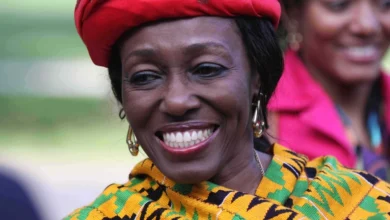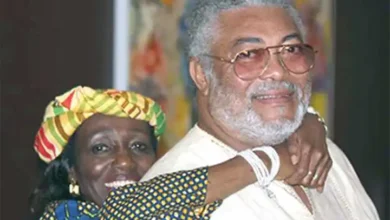
BRICS Nations: A New Force in Global Power Dynamics
BRICS alliance now represents over 40% of the global population and controls more than 30% of worldwide GDP. This shows a clear change in global power dynamics. Brazil, Russia, India, China, and South Africa have evolved beyond an investment concept into a formidable economic and political force. Their collaborative efforts challenge the Western-dominated international order through economic cooperation.
BRICS expanded in 2024, showing its appeal to emerging economies that want alternatives to Western-led institutions. The member nations have established new development banks and promoted de-dollarization efforts. These actions reshape global governance structures actively. This piece explores how BRICS countries change international power relationships and their effect on global financial systems. The implications for the existing world order deserve attention too.
The Rise of BRICS: A New Global Force
BRICS welcomed five new members in January 2024: Egypt, Ethiopia, Iran, Saudi Arabia, and the United Arab Emirates. This expansion changed BRICS from an investment acronym to a powerful economic and political alliance. The new coalition, BRICS+, now represents 46% of the global population and 35.6% of worldwide GDP. These numbers dwarf the G7’s share of 10% population and 30% GDP.
BRICS has grown stronger since its early days. The alliance created the New Development Bank with $100 billion in authorized capital. They also set up the Contingent Reserve Agreement to promote economic stability. The Digital Economy Working Group and BRICSpay system now enable non-dollar transactions between member countries.
BRICS+ dominates global energy markets. Member states control 40% of crude oil production and exports worldwide. Trade between BRICS countries grows faster than their trade with G7 nations. This deeper economic connection and new institutions make BRICS+ a powerful force. The alliance now shapes global governance and challenges traditional Western institutions.
Challenging Western Financial Dominance
BRICS nations are taking steps to challenge the West’s control over global finance by building their own financial systems. The 15-year old coalition created several ways to reduce their reliance on Western-controlled systems. The New Development Bank (NDB) leads these initiatives with an authorized capital of $100 billion and focuses on eco-friendly development projects.
The group launched these financial initiatives:
- BRICS Pay, a decentralized payment messaging system
- Alternative settlement platforms to challenge SWIFT
- Payment Task Force and Think Tank Network for Finance
- Contingent Reserve Arrangement
Member states have made progress in moving away from the dollar. China and Russia now use their local currencies for 95% of their trade. The NDB gives about one-fifth of its loans in Chinese yuan. The US dollar still controls 80% of global trade and remains the world’s main reserve currency.
BRICS nations keep expanding their financial independence through systems that aid trade and investment in local currencies. They developed digital currencies and alternative payment systems to counter Western financial sanctions. This shows their steadfast dedication to building a more balanced international monetary system.
Reshaping Global Governance
BRICS+ has revolutionized global governance structures and emerged as a powerful force that reshapes international institutions. This coalition represents half of the world’s population and two-fifths of global trade, and builds new frameworks that support international cooperation and development.
BRICS+, now several years old, has created these major institutions that mirror existing global structures:
- The New Development Bank for infrastructure financing
- The Contingent Reserve Arrangement for economic stability
- The Payment Task Force for financial cooperation
- The Think Tank Network for policy coordination
- The Space Cooperation Joint Committee for technological advancement
UN Secretary-General António Guterres recognizes BRICS’s role in deepening multilateralism, especially when reforming the outdated and ineffective international financial system. The coalition creates more equitable development assistance mechanisms and removes difficult conditions that Western-led institutional funding often requires.
BRICS+ nations shape more than economic reforms. They work together on various global issues from technological research to eco-friendly development. This united approach challenges Western-dominated institutions and promotes a multipolar world order that reflects today’s global economic and political realities better.
Geopolitical Implications and Power Shifts
BRICS+ has revolutionized the geopolitical world by becoming a counterweight to traditional Western influence. Power distribution among multiple centers instead of Western concentration shows a fundamental change toward what experts call a multipolar world order.
BRICS+ expansion brings several key strategic effects:
- Alternative diplomatic channels now exist outside Western influence
- Global South nations cooperate better economically
- Nations have stronger collective bargaining power in international forums
- Countries resist Western sanctions and pressure more effectively
BRICS+ nations now represent 37.3% of world GDP, which has changed G20’s dynamics significantly. The coalition still faces some internal challenges. China and India have geopolitical rivalries, while Saudi Arabia and Iran compete for their interests.
Middle powers within BRICS+ add new layers to international relations. These nations choose strategic independence and build relationships with both Western and Eastern blocs. They also push for changes in global governance structures. Countries can now pursue their interests through various collaborations and agreements. This flexibility shows that the international system moves toward a more nuanced, multi-aligned order rather than forming rigid opposing blocs like during the Cold War.
BRICS+ proves the dramatic changes in global power dynamics of the 21st century. This coalition has grown way beyond the reach and influence of its original form. It represents almost half the world’s population through strategic expansion and institutional growth. The group has created alternative financial systems, development banks, and governance structures. These changes show a clear move from traditional Western-dominated institutions while taking a practical approach to international cooperation.
The world now sees a new phase of international relations with multiple power centers instead of a simple East-West split. BRICS+ members direct complex relationships that balance cooperation with strategic independence. They handle internal differences while working toward common goals. Their expanding influence points to a future where global governance reflects emerging economies’ diverse interests better. Their success depends on unity and adaptation to global challenges that keep evolving.






[…] while Japan sends humanitarian aid to Ukraine. These developments show a fundamental change in global power dynamics. The situation has reshaped international alliances and security frameworks that will […]